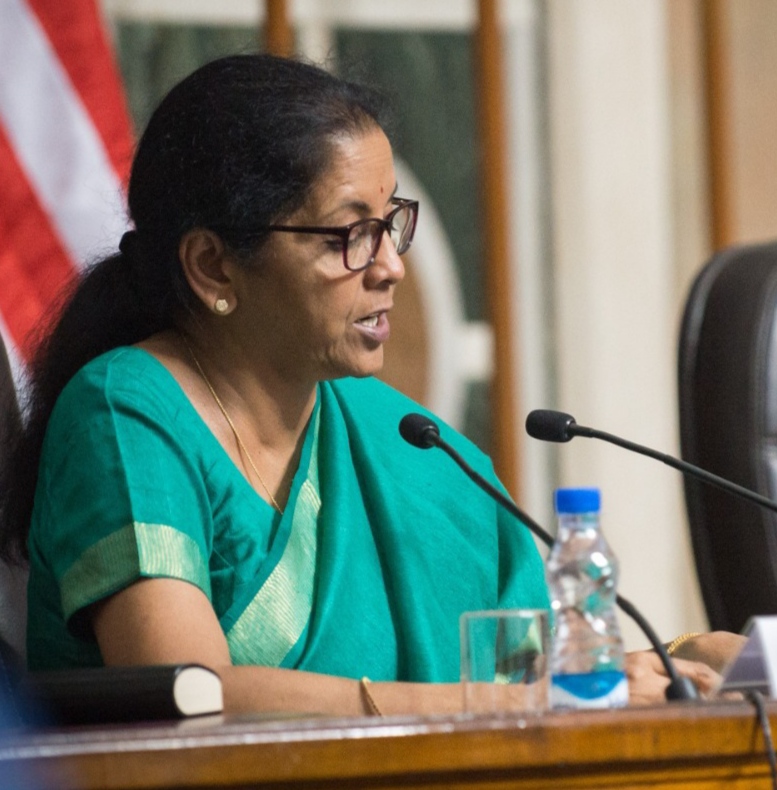
Making policies beyond the GDP is a farsighted move and must be appreciated
Date : 18/05/2024

Honorable Finance Minister (FM) Nirmala Sitharaman presented the third union budget of Modi government 2.0 at a time, when India along with the world is witnessing one of the biggest health crises of centuries. Covid-19 lead to staggering negative growth, historical slowdown in major sectors, and overall destabilized macroeconomic variables. It would have made the exercise of budget preparation unusual for the key personnel at the ministry of finance in the North Block. FM and her team had the responsibility to bring back the lost glory and stimulate the growth and reestablish the sense of achieved wellbeing, social fabric and community capital among the people of the country.
To achieve these ambitious aspirations, FM set six pillars namely: Health and wellbeing; Infrastructure; Inclusive development; Development of Human Capital; Research and development; Minimum Government and Maximum Governance.
India’s position on these pillars – reflected through various indicators; has been pathetic vis-a-vis health of the economy. As per the latest available data; India stands at 144th position out of 153 countries in Happiness index; 62nd out of 74 emerging economies in inclusive development index; 116th out of 174 countries in the human capital index; 131st out of 189 countries in human development index: 48th in the list of top 50 innovating counties in global innovation index; 129th out of 158 countries in inequality index. These numbers are signaling highly alarming positions and draw serious attention of policymakers for hasty policy interventions. Through the current budget, steps have been made in this direction which should be applauded, but that’s is not enough.
The size of the budget for Financial Year 2022 (FY22) is Rs. 34.83 lakh crore (15.6% of GDP) which is Rs. 4.40 lakh crore more than the Budget Estimate (BE) of FY21. Meaning hereby, the government is going to spend 14.50 % more in FY22 than what it has planned to spend in FY21. The higher spending will support demand and help faster recovery. To boost investment, Rs. 5.54 lakh core (about 2.5% of GDP) has been kept for capital expenditure (Capex) which is an impressive increase of 34.5% over budget estimate for FY21.
The revenue receipts for FY22 have been estimated to Rs. 17.88 lakh crore which is Rs. 2.32 lakh crore less than the budget estimates for FY21. Thus, the fiscal deficit-GDP ratio is estimated to 6.8% for FY22 against estimated 3.5% and revised 9.5% for FY21. Thus, the statement of account of Government of India, conveys a common message- more government expenditure and highly ambitious net tax revenue of about Rs. 15.45 lakh crore which is 15% more than revised net tax receipts for FY21.
In accordance with the stated six key pillars, funds have been allocated for various schemes to concerned departments and ministries. Rs 14.33 lakh crore has been estimated for scheme expenditure (central sector schemes Rs 10.52 + centrally sponsored scheme Rs. 3.81) and Rs. 20.50 lakh core for transfers, establishments and other expenditure.
When the country is facing a once-in-a-lifetime health crisis, monetary support for vaccination and healthcare is a highly important fiscal stimulus. The budgetary allocation for the health sector is at ever-time high, Rs. 2.84 lakh crore which is a rise of 137 percent. Out of this, Rs. 35,000 crores is earmarked for Covid-19 vaccines. Such expenditure on vaccination drive will bring people out of fear of being infected by the virus. This will help in the steady and fast revival of tourism and hospitality sectors. The revival of these sectors will bring back jobs for millions of unemployed due to Covid-19.
The fund allocation for the ministry of education has been cut to Rs. 93,223 crores from Rs. 99,311crore. The fund for the Department of School Education has been reduced to Rs. 54,873 crores from Rs. 59,845 crores in the previous budget. Same as the case with the Department of Higher Education, the allocation has gone down to Rs.38,350 crore from Rs.39,466 crore. This reduction is at a time when student community and educational institutions are deeply affected by the pandemic.
The spending on education has remained stagnant over the last many years. The economic survey 2020-21 reported that spending on education has remained at 2.8% of GDP during 2014-19 and increased to 3-3.5% in the 2019-21 period. Ideally, this ratio must be 6% of GDP.
Education is the most powerful weapon to achieve satisfactory progress among all the key parameters of six pillars. The epochal and sanctified writing of Vedas and Upanishads eloquently describes the power of education. In Rigveda it is viewed as – “something, which makes a man self-reliant and selfless” and in Upanishads-“Education is that whose end product is salvation.” Reducing fund for this sector is really disappointing, but making policies beyond the GDP as reflected in the six pillars is a farsighted move and must be appreciated.
Image Credits: Jim Mattis via Wikimedia commons
Tags :
Note: Your email address will not be displayed with the comment.